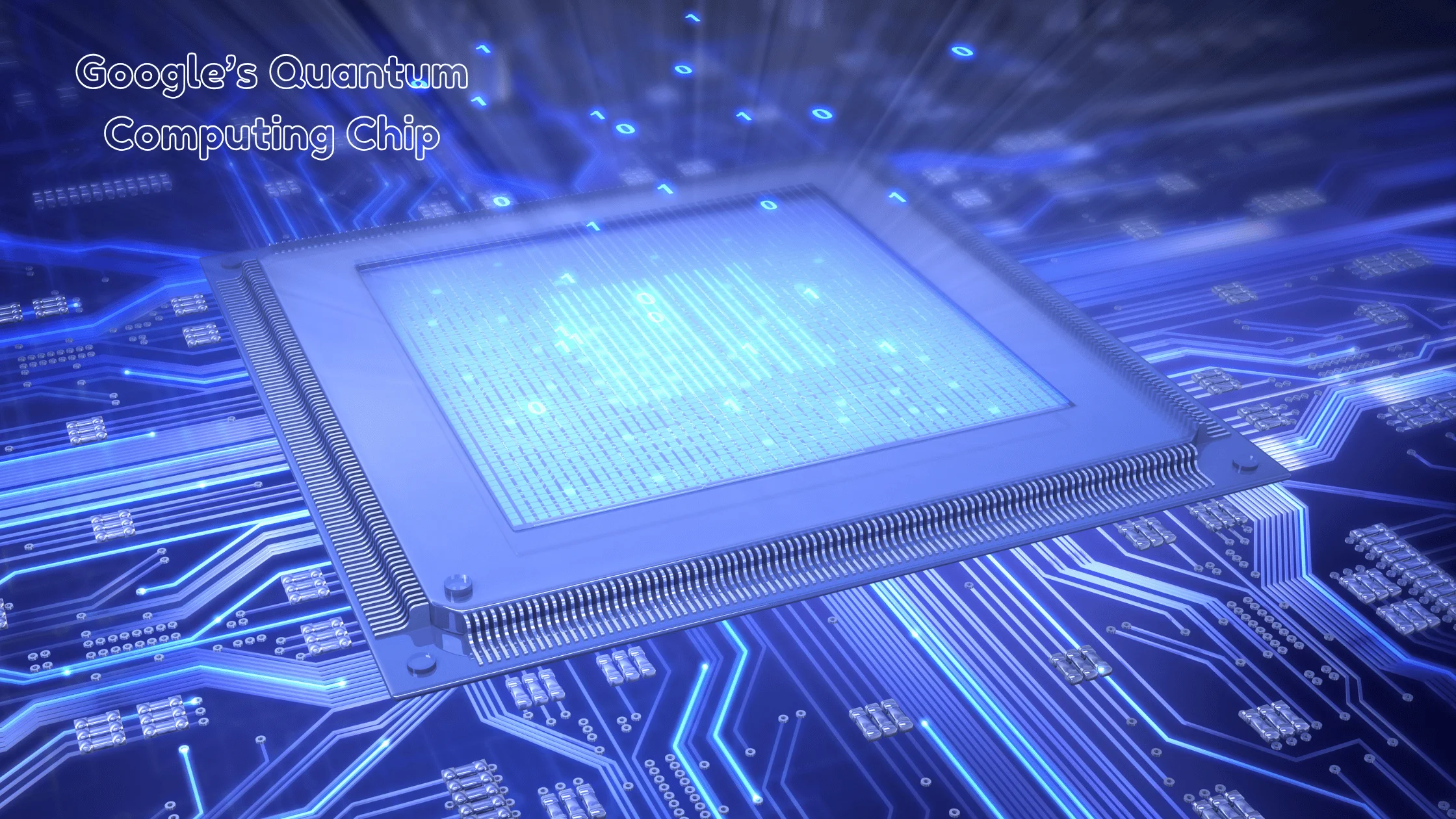Google’s Quantum Computing Chip: Willow
Published: 1 Jun 2025
The evolution of quantum computing is fast and furious, and Google has made a big splash with its latest quantum processor, Willow. This chip is a huge leap in error correction and computational efficiency, and it’s bringing us a lot closer to real-world quantum computing.

Overview of Willow
Willow is a superconducting quantum processor with 105 qubits. It was developed by Google Quantum AI and follows the path laid out by earlier quantum chips such as Foxtail (2017), Bristlecone (2018), and Sycamore (2019). Unlike Sycamore, which had 53 qubits, Willow was designed to vastly improve error reduction. It is the first Google quantum processor to use error-correcting codes.
Key Features
A square grid arrangement of 105 transmon qubits that are superconducting.
Enhanced manufacturing methods for improved qubit stability.
A breakthrough in quantum error correction achieved error rates below the threshold necessary for meaningful quantum computation.
The T1 coherence time advanced from Sycamore’s 20 microseconds to 100 microseconds.
Connectivity of average qubit of 3.47, for more efficient computation.
Quantum Error Correction: A Major Breakthrough
Correcting errors in quantum computers is a tough nut to crack. Because qubits are so sensitive to outside influences, they have a strong tendency to compute incorrectly. Willow addresses this problem in a fundamentally different way from most other quantum computing efforts. It plans to reduce its error rate to a very low level before trying to push computation up to the level of using many more qubits than we can currently afford.
How Does Willow Achieve Error Correction?
Participation ratio engineering: Makes certain that it is mainly the qubits that should interact that do interact, which minimizes errors in quantum computing.
Optimizing circuit parameters: Improves the stability and coherence of qubits.
Error correction below threshold: A milestone that allows logical qubits to maintain information longer.
Even with progress made, critics say Willow’s rates of error in logic are still too high.14% per cycle. Those levels (to repeat myself) are what’s needed if you’re going to execute large-scale quantum algorithms. Otherwise (I can hardly believe I’m writing this), the algorithms will deliver incorrect output at rates that are astonishingly high for something that’s supposed to be a reliable computing platform.
Willow is a 16-qubit device, where 4 of those qubits are dowsed in entangled states. If you take the 4 entangled qubits and feed them into a quantum gate operation that’s similar (but not identical, it seems) to an AND gate operation in classical computing (which Willow has executed with shocking success), you get correct output at rates that, in all probability, are indistinguishable from the outputs produced by a classical computing AND gate.
Unprecedented Computational Power
Willow showed what it’s made of by carrying out a Random Circuit Sampling (RCS) benchmark job in less than five minutes—a calculation that our best supercomputers would need 10 septillion years to perform. This kind of dazzling performance makes clear the ability of a quantum computer to tackle problems that are beyond the reach of our most powerful classical machines.
Potential Applications
The potential of quantum computing to transform various fields is considerable. Such revolution could touch on several fronts, among them:
- Computing: Harnessing the physics of the quantum world to solve problems far beyond the reach of today’s fastest supercomputers.
- Cryptography: Using the same physics to crack codes—that is, to decrypt information—that are now impossible to break.
- Optimization: Using quantum computers to find the best solution among many to a given problem, such as where to place antennas in a wireless network or how to route airplanes efficiently among 081016-6 Andee Stein and Randall Hughes numerous airports.
- Simulation: Using quantum simulators to mimic the behavior of complex systems, such as molecules in chemical reactions, far faster and more accurately than conventional computers can.
Artificial intelligence: Using the unprecedented power of quantum computing to train neural nets. ‘The potential is so overwhelming that some experts predict that a single quantum device could perform a task equal to training all the neural nets that have ever been trained on all the computers that have ever existed,’ Stein and Hughes write.
- Medicine: Speeding up the discovery of drugs and simulations of molecules.
- Nuclear fusion reactor designs need to be optimized.
- AI: Improving the algorithms of machine learning.
- Cryptography: Making encryption methods even stronger to withstand quantum attacks.
Concerns have been raised, though, about quantum computing’s potential to shatter the cryptographic systems we depend on today. Breaking RSA encryption, which Google uses to protect its Gmail, is at least 10 years away, according to Google.
Challenges and Future Prospects
Despite the groundbreaking achievements of Willow, it remains what it truly is: an experimental device. A fully functional quantum computer that can solve real-world problems and perform at a level needed for practical, everyday use is still years away, maybe more than five years, according to some estimates. Google isn’t sitting still. Its team of researchers is hard at work on the following fronts.
- Creating quantum algorithms for real-world uses.
- Improving the stability of qubits and the error correction associated with them requires better hardware.
- Investigating the potential for business use in the pharmaceutical, materials science, and logistics sectors.
The future of Willow looks bright, in the eyes of its critics, thanks to something called quantum computing. Advanced artificial intelligence, they argue, will be helped greatly by this burgeoning technology. And quantum computing will be quite a help to AI, in some very interesting ways, as well.
Conclusion
A significant milestone in quantum computing has been reached with Google’s Willow chip. Unprecedented computational power and error correction possibilities are built into the device. The Willow chip, while not yet a practical application, is being used in tests of various sorts that could lead to its eventual use in solving the kinds of problems that only a quantum computer can solve.

- Be Respectful
- Stay Relevant
- Stay Positive
- True Feedback
- Encourage Discussion
- Avoid Spamming
- No Fake News
- Don't Copy-Paste
- No Personal Attacks

- Be Respectful
- Stay Relevant
- Stay Positive
- True Feedback
- Encourage Discussion
- Avoid Spamming
- No Fake News
- Don't Copy-Paste
- No Personal Attacks





